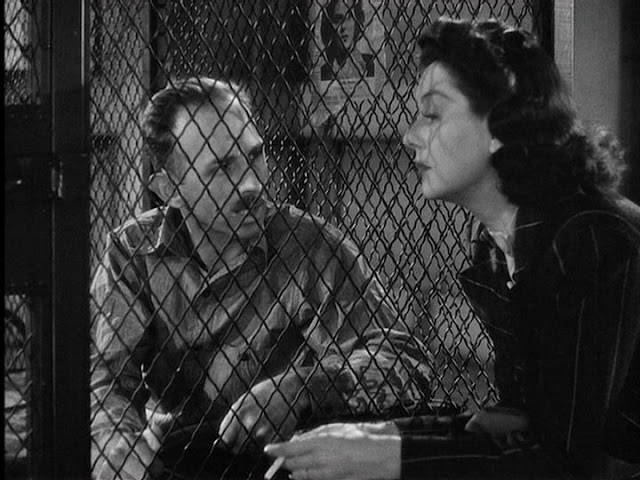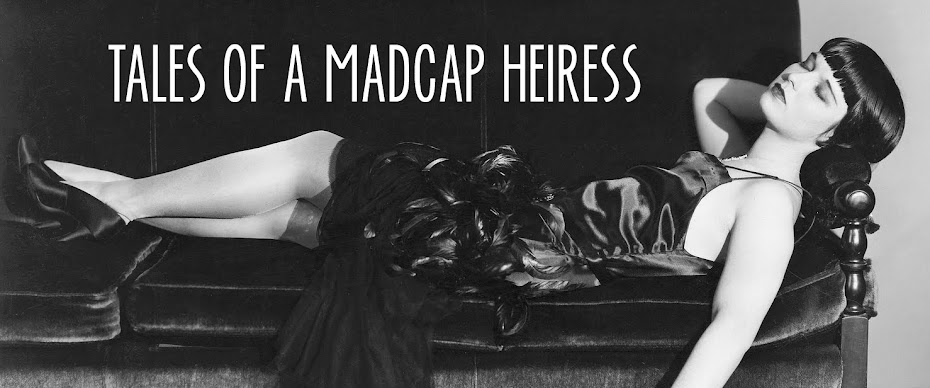As you can tell by
the title of this blog, I love screwball comedies. And I especially love those
that feature my beloved Cary Grant. So it’s no surprise that one of my
favourites is Howard Hawks’ His Girl Friday. Exhibiting some of the fastest talk in film
history, His Girl Friday is a biting
and hysterical satire on the newspaper world and one of the best films of
Hawks’ career.
In 1928 Ben Hecht
and Charles MacArthur’s play The Front
Page entertained Broadway theatergoers with the story of Chicago
newspapermen and the seedy world they inhabited. The play made a smooth
transition to the silver screen in 1931, its dialogue well suited for the new
sound medium. When Hawks suggested remaking the story in 1939, he was initially
met with skepticism. What fresh approach could he take to the popular story?
Hawks soon found
the answer. One evening, while doing a read through of the play, he asked an
actress present to read the part of Hildy Johnson, one of the newspapermen. He
was struck by the different nuances a woman brought to the role and decided
that Hildy Johnson was going to be female. This change would allow him to
introduce the battle of the sexes and enter the realm of the screwball comedy.

In His Girl Friday, Walter Burns (Cary Grant),
the ruthless publisher of the Evening Sun
newspaper, is greeted by his former wife and ace reporter, Hildy Johnson
(Rosalind Russell), who informs him that she is getting married to an insurance
salesman, Bruce Baldwin (Ralph Bellamy). Walter, still in love with Hildy,
decides to thwart her plans and win her back. The upcoming execution of a
convicted cop killer becomes Walter’s ruse to get Hildy to stay. Playing on her
reporter’s instincts, Walter convinces her to wait long enough to get an
interview with the murderer, Earl Williams (John Qualen), and prove that he was
mentally unfit at the time of the crime. Hildy, torn between her yearning to
lead a “normal” married life and her inability to ignore a story, relents and
helps Walter. In the end, she turns her back on domesticity and
embraces her true calling as a reporter.
The film opens with
a great tracking shot of a bustling newsroom and the arrival of Hildy and
Bruce. Upon entering her
ex-husband’s office, Hildy immediately begins sparing with Walter, thus
establishing the basis of their relationship—they are at
their happiest when fighting. Hildy quickly admonishes Walter for interfering
with their divorce.
Hildy:
Hiring an airplane to write ‘Hildy, don’t be hasty, remember my dimple,
Walter.’ It delayed our divorce by 20 minutes while the judge went out to watch
it.
Walter:
I don’t want to brag but I still have that dimple and in the same place.
Hildy may say she’s over Walter, but it is obvious to the
audience that the chemistry between the two is still there.
Walter Burns as
played by Cary Grant is perhaps the most dapper-looking publisher in film
history (but then again, let's be honest. Grant was always the most dapper-looking anything that he played). With his well-groomed hair and perfect fitting suits, Walter is “the
king of the universe” at the Sun.
Charming and witty, he is never at rest. He is in motion throughout
the film, his mind constantly churning, trying to solve endless problems.
When Hildy announces her impending marriage, Walter immediately sets out to
sabotage it. “Is there any way we can stop the 4:00 train for Albany from
leaving town?” he asks his editor. “We could dynamite it,” is the reply. “Could
we?” Burns wonders out loud. He spends the remainder of the movie, always one step
ahead of Hildy, trying everything to win her back.
Grant is in top
form, delivering his lines with devilish glee. In one scene, he adlibs “the last man to cross me was Archie Leach a week before he cut his
throat.” Archie Leach, of course, was Grant’s birth name.
Rosalind Russell as
Hildy Johnson shines in what is arguably the best female reporter role in film.
Originally intended for Jean Arthur, it is hard today to think of anyone else
in the part. Russell gives as good as she gets and manages to keep up the
fast-paced banter with Grant.
All too aware of
his true nature, Hildy spends most of the film on guard, trying to cut Walter
off at the pass. Others might fall for his charm, but Hildy has too much
history with him.
Bruce:
He’s not the man for you. I can see that. But I sort of like him. He’s got a
lot of charm.
Hildy:
Well, he comes by it naturally. His grandfather was a snake.
The hapless Bruce
Baldwin is caught between the two. Ralph Bellamy’s slow reaction to Walter and
Hildy and his befuddled expressions makes him a perfect counterpart to Grant's urbane Walter. He even gave Grant one of
his best adlibs in the film. When Walter sends Evangeline, one of the many
people who do “favors” for him, out to get Bruce arrested, he answers her
question of what Bruce looks like with “He looks like that fellow in the
movies, you know, Ralph Bellamy.”
The film is rounded
out with a stellar supporting cast, including the mole-like John Qualen as
murder Earl Williams, Gene Lockhart as the stumbling sheriff, Abner Biberman as
Walter’s henchman Louie, Billy Gilbert as the comical messenger Joe Pettigrew,
and a slew of strong supporting actors as the motley crew of reporters who fill the pressroom.
The film title is
followed with a statement that the story depicted in this film is about
“newsmen from long ago. Now, once upon a time…” Whether or not the news world
of His Girl Friday is fictional, the
warning announces to the audience that they are entering a different world, a
cutthroat place where reporters are constantly trying to out best each other
to get the scoop. In one scene, the reporters ask the sheriff to change the
time of Williams’ hanging so they can make the city edition. And early in the film,
the audience learns that Walter left Hildy on their wedding night to cover a
fire; their honeymoon was spent in a coalmine covering a strike. In their
world, the story always takes precedence.
His Girl Friday is perhaps best known for its rapid-fire dialogue delivered at a machinegun pace. The overlapping dialogue helps to amplify the
chaos going on in the story. The actors often appear to spit out their words,
as if in a race to finish first. In one scene, where Walter and Hildy try to
outtalk each other, they sound like auctioneers. Hildy finally hits the table
with her fist and shouts, “sold American.”
Many critics have
debated exactly how fast the dialogue is, with some going so far as
to time it. While it is true that the actors speak quickly, some of the speed
is achieved by how the audio was recorded. Hawks did away with booms during
the shooting, choosing to use multiple microphones instead. Unable to operate
them at the same time, the sound engineer had to frantically cut back and forth
between them, creating much of the overlapping dialogue. This allowed one
actor’s pause to be filled with lines from another. Hawks also used quick cuts
between scenes that add an element of speed. Hawks is often
credited with being the first to use overlapping dialogue and whether or not
the claim is true, he certainly mastered the technique in this film.
 Hildy interviews Earl Williams.
Hildy interviews Earl Williams.
His Girl Friday by its nature is a loud film—people
shouting, ringing telephones, gun shots. So the film’s few quiet moments tend
to be the most striking. One of these is the interview scene between Hildy and
Williams. Opening with a dissolve, Hildy is sitting, dominant in the frame,
speaking softly to Williams through the bars of his cell. The scene slows the film
down to give the audience enough time to take a breath and also implies the
seriousness of what Hildy is trying to do—save a man’s life. Another scene is
when Molly, the woman who innocently befriended Williams, visits the pressroom
only to be verbally abused by the reporters. After she departs in tears, the
men remain silent, aware of their cruelty. The silence is only broken by a
phone call for Hildy who greets the room with the condemnation “gentlemen of
the press.”
One of the issues
addressed in the film is that of a woman’s role. Hildy is torn between wanting
to be a “real woman” who stays at home and being a journalist. In the
beginning, she appears set on the idea of becoming a housewife. As the film
progresses, though, her claims of wanting to leave journalism behind sound less
convincing. Caught up in the excitement of writing her career-making story, Hildy blurts out “I’m no suburban bridge player. I’m a
newspaperman” to the waiting Bruce. She doesn’t realize until later, when the
euphoria has started to wear off, that Bruce is gone for good.
 Gentlemen of the Press.
Gentlemen of the Press.
Hildy has struggled
to be “one of the boys” in the news world and not just a “Girl Friday.” Dressed
in pinstripes, Hildy banters easily with the men in the pressroom, smoking and
cracking jokes. Even with Walter, she is often treated like a newsman. In the
beginning of the film, Walter waxes nostalgically about their marriage. When
Hildy admonishes him, he insists she trapped him into marrying her, claiming he
was “tight” the night he proposed. “If you’d been a gentleman, you’d have
forgotten all about it,” he says. When Walter lights a cigarette, Hildy must ask not
only for cigarette but also for a light. And when she goes to light a cigarette in the
restaurant, Walter leans over and takes the match from her before she can light her
own.
The climax of the
film comes with Earl Williams' escape. Hildy, who is making her exit to catch
the train to Albany with Bruce and his mother, is giving her farewells to the
newspapermen (“don’t forget your pal Hildy Johnson”) when her speech is
interrupted by the sound of gunfire. The men rush to the window while Hildy
lingers by the door. The men soon run to the phones, and Hildy hesitates only until
they leave before grabbing a phone and calling Walter. Her decision has
sealed her fate. Soon after, when the two are arrested for hiding Williams
in a desk in the pressroom, Hildy and Walter are handcuffed together,
symbolizing their union.
The film ends with
Walter and Hildy planning to remarry. The camera stays in the pressroom while
the audience sees Walter and Hildy head out the door and down the stairs.
Hawks, never one to be sentimental, doesn’t leave the audience with the vision
of a rosy marriage. Hildy is left to carry her heavy typewriter while
Walter is once again diverting their honeymoon to cover a story. For two
newspapermen, there could be no better ending.
 Elizabeth Allan and Thora Hird fight for king and country in Went the Day Well?
Elizabeth Allan and Thora Hird fight for king and country in Went the Day Well?

















